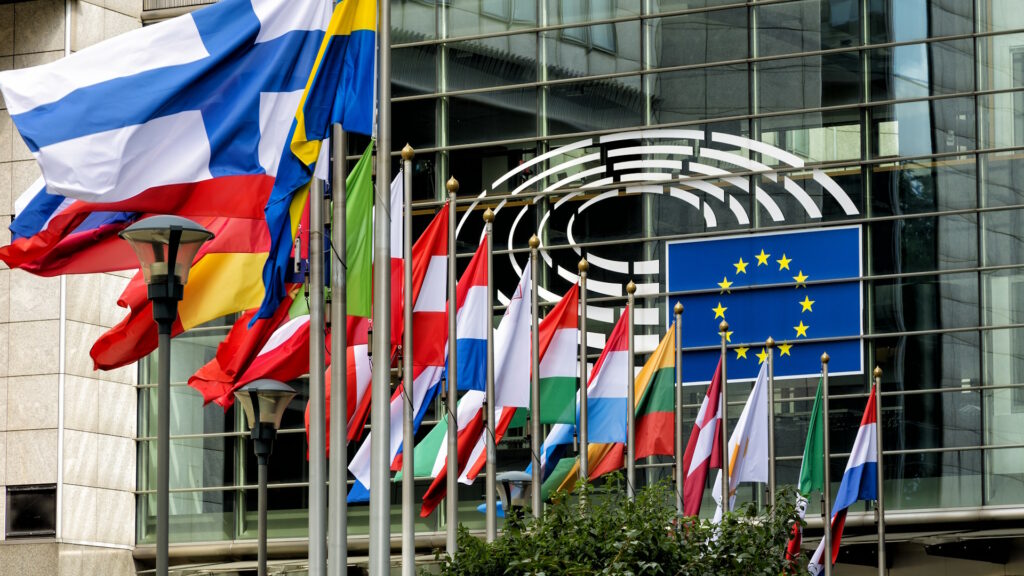E-Invoicing in Romania
Last update: 2025, May 23
Summary
B2G
Mandatory
Mandatory via the central platform RO-eFactura in XML format following the RO_CIUS specifications.
B2B
Mandatory
Mandatory via the central platform RO-eFactura in XML format following the RO_CIUS specifications.
B2C
Partially mandatory
Mandatory for regular B2C invoices via the central platform RO-eFactura in XML format following the RO_CIUS specifications.
Point-of-sale tax receipts are exempt.
What the Law Says
B2G E-Invoicing
B2G e-invoicing in Romania is mandatory since July 1, 2022, and was possible since November 2021. E-invoices must be sent via the official central platform RO-eFactura in XML format, either UBL 2.1 or CII syntax according to the RO_CIUS specifications (which are EN16931-compliant).
The tax authority is keeping updated a comprehensive list of Romanian public administrations within the scope of the B2G mandate, along with their CIF – Tax Identification Code (Cod de Identificare Fiscala).
B2B E-Invoicing
B2B e-invoicing is mandatory since July 1st, 2024 via the official central platform RO-eFactura. Invoices must be issued in XML format, either using the UBL 2.1 or the CII syntaxes, according to the RO_CIUS specifications (which are EN16931-compliant).
Before that, B2B e-invoicing was already possible since November 2021, and was even mandatory for some types of goods that presented a high risk of tax evasion since July 1, 2022.
Finally, e-reporting is also mandatory country-wide, and is performed automatically by the RO-eFactura platform during the B2B e-invoicing transaction.
B2C E-Invoicing
B2C e-invoicing is mandatory in Romania since January 1, 2025, and suppliers must send electronic invoices in XML RO_CIUS format through the RO-eFactura central platform to their end consumers, as announced by the Ministerul Finantelor (Ministry of Finance).
However, the mandate does not apply to point-of-sale tax receipts (issued at retail stores, restaurants, parkings, etc.).
Additionally, some exceptions exist (associations, foundations, special regime for farmers, …) for whom the B2C e-invoicing mandate will apply only starting from July 1, 2025.
Timeline
Central platform RO-eFactura available
B2G e-invoicing mandatory, B2B partially
E-reporting becomes mandatory
End of the e-reporting grace period
B2B e-invoicing becomes mandatory
B2C e-invoicing becomes mandatory
Technical Details (B2G, B2B, B2C)
Comprehensive guidelines are available on the ANAF website.
RO-eFactura central platform
Starting July 1, 2024, all B2G & B2B invoices in Romania must be submitted electronically for most businesses in order to comply with the upcoming mandate.
More specifically, Invoices must be sent through the RO-eFactura central platform. The tax authority provides technical specifications to help companies connect to the RO-eFactura platform using Web Services.
Suppliers that are not equipped with e-invoicing solutions can also manually input their invoices directly on an official web portal, that will convert them into the proper invoice format and send them to the RO-eFactura central platform.
Virtual Private Space (SPV)
The SPV (Spatiul Privat Virtual) is a comprehensive tax service provided by the ANAF. All businesses must register with the ANAF (Agentia Nationala de Administrare Fiscala) in order to get a certificate and to access their SPV on the ANAF website.
In the e-invoicing context, the most important feature of the SPV is an invoice inbox, where all e-invoices that went through the RO-eFactura central platform are made available to the invoice recipients. They must retrieve those invoices (manually or via an automated solution) and archive them, as the SPV will only store the invoices for 60 days.
The SPV is also equipped with a messaging feature that allows suppliers & buyers to discuss and to manage invoicing disputes.
Invoice format and content
Electronic invoices in Romania must be issued in XML format, either UBL 2.1 or CII XML, to be compliant with the upcoming e-invoicing mandate. Both options are also compliant with the European Norm (EN) 16931.
Additionally, e-invoices in Romania must respect a set of local specifications called RO_CIUS, compliant with the European Norm (EN) 16931.
The tax authority has published a set of technical resources to help companies regarding the invoice requirements in Romania.
The Invoicing Hub Word
Romania
Romania has decided to implement in very quick succession an e-reporting and an e-invoicing mandates for B2G, B2B and B2C transactions.
This decision was not a surprise given that Romania faces one of the highest tax evasion rates of the European Union, and of course because the EU Directive 2014/55/EU forces EU countries to implement such mandates.
Still, the Romanian government opted for a very aggressive timeline as the e-reporting mandate came into force about 3 months after it was voted. Too short for most companies to implement a solution and become compliant, leading to the issuance of grace periods by the government.
While it is good that Romania moves further on the road to e-invoicing, the implementation calendar chosen by Romania is problematic for companies that have to handle this new requirement with a lot of urgency, and the lack of clear documentation possibly leads to botched and not-well-designed projects.
It is then crucial for businesses to find the right solution and the right partner, but with such constraining deadlines and lack of information, it remains a complicated topic.
Additional Resources
Tax authority supervising the e-invoicing mandates in Romania
Public authority in charge of the online tax services in Romania, and hosting the SPV
RO-eFactura web portal used for invoice manual submission portal and various applications (invoice verification, conversion, …)
Legislative texts & technical specifications maintained by the Ministerul Finantelor
Official guidelines about e-invoicing in Romania published by the ANAF
Get your Project Implemented
Gold Sponsor
Silver Sponsors
Advertisement
Latest News - Romania
E-Invoicing named key enabler in EU’s Single Market Strategy
OpenPeppol conference 2025 – Brussels, June 17-18
ViDA formally published
ViDA clears final step in European Council
EU Parliament approves latest ViDA updates
The Invoicing Hub
experts can help you
Strategy, Guidance, Training, …




